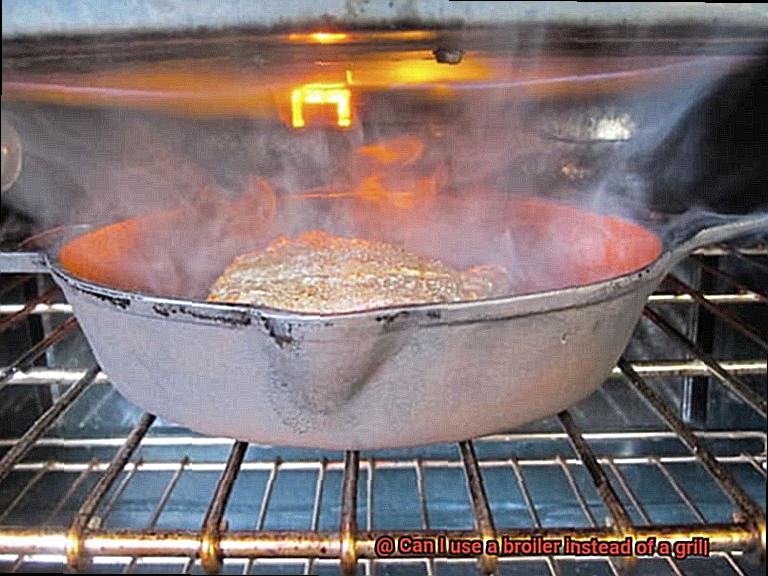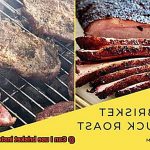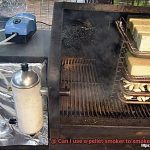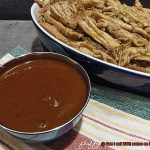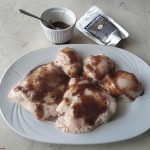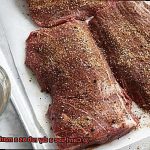Feeling limited by your cooking equipment can be frustrating, especially when you’re trying to impress your guests with a mouth-watering meal. But fear not, because the answer to the question “Can I use a broiler instead of a grill?” is a resounding yes.
Both grilling and broiling are dry heat cooking methods that can yield similar results, but with some distinct differences. Grilling involves direct heat from charcoal or gas flames, creating that delectable char and smoky flavor we all love. Broiling, on the other hand, utilizes radiant heat from the top of the oven to cook food quickly and create a crispy exterior.
While some may argue that nothing beats cooking over an open flame, broiling can be an excellent substitute for those who lack outdoor space or live in apartments. It’s also perfect for quickly cooking thin cuts of meat or vegetables that would otherwise fall apart on a grill.
So don’t let your lack of a grill hold you back from culinary greatness. Give broiling a try and see if it becomes your go-to cooking method. You might just be pleasantly surprised at how delicious and convenient it can be.
Contents
What is a Broiler?
If you are looking for a quick and easy way to create delicious, crispy dishes without the need for an outdoor grill, then a broiler might just be the appliance for you. A broiler is a kitchen tool that uses intense heat to cook food quickly and can be found in most home ovens. It is located at the top of the oven and works by heating up a metal element that radiates heat downwards, creating a mouth-watering, crisp exterior on the food being cooked while keeping the interior juicy and tender.
While broiling may not be exactly the same as grilling, it can provide similar results in a kitchen setting. This means that you can enjoy grilled-like dishes even when outdoor grilling is not possible. Moreover, using a broiler is perfect for those who live in apartments where outdoor grilling is not permitted.
To use a broiler, ensure your oven has a broil function and that your broiler is clean. Place your food on a broiler pan or wire rack set over a baking sheet. To ensure even cooking, adjust the rack position depending on the thickness of the food being cooked. For thinner cuts of meat or fish, use a higher rack position while thicker cuts should be placed on a lower rack position.
Broilers are versatile appliances that can be used to cook meat, poultry, fish, toast bread or melt cheese on top of dishes like casseroles or French onion soup. However, it’s important to keep an eye on your food being cooked under the broiler since the intense heat can cause food to burn quickly.
What is a Grill?
Let’s start with the basics: a grill is a cooking device that uses an open flame to cook food. But it’s so much more than that. Grilling is a versatile and delicious cooking method that can be used to cook everything from juicy steaks to grilled fruit.
Grills come in all shapes and sizes, from small portable units perfect for a backyard barbecue to large, permanent installations for serious grill masters. And the fuel options are just as varied. Gas grills are the most popular due to their convenience and ease of use, while charcoal grills are favored by barbecue enthusiasts for their smoky flavor. Electric grills are perfect for indoor use or those living in apartments, while pellet grills offer both smoking and grilling capabilities.
But why choose grilling over other cooking methods? Grilling allows for quick cooking times while imparting a smoky flavor and crispy texture to your food. It’s also a great way to cook a wide variety of foods, including meat, vegetables, and even fruit. Plus, there’s something special about cooking outdoors over an open flame that brings people together and creates memories.
If you don’t have access to an outdoor grill, don’t worry. You can still achieve that delicious grilled flavor with a broiler. While not exactly the same as grilling over an open flame, a broiler uses intense heat that radiates downwards to give your food a crispy exterior while keeping it juicy and tender inside. Just be sure to keep an eye on your food since it can burn quickly under the broiler’s intense heat.
Key Differences Between a Broiler and a Grill
Well, let me break it down for you. As an expert on this topic, I can help you understand the subtle nuances of these two popular cooking methods.
Firstly, let’s talk about the heat source. A broiler is typically located at the top of an oven and uses direct heat, while a grill uses indirect heat from a fire or gas burner. This means that with a broiler, your food will be cooked from above, while with a grill, it will be cooked from below. These different heat sources can have an impact on the way your food cooks and the flavors that develop.
Next, let’s discuss how food is positioned while cooking. With a broiler, food is placed on a pan or rack directly under the heat source. Alternatively, with a grill, food is generally placed on grates above the heat source. This difference can impact both the texture and appearance of your food as well as how evenly it cooks.
Temperature control is also an important consideration when deciding between these two methods. A broiler usually requires adjusting the distance between the food and the heat source to control the temperature. In contrast, grills typically have adjustable burners or vents that allow for more precise temperature control. This can affect how long your food needs to cook and how it turns out.
So which one should you choose? Ultimately, it depends on what you’re cooking and your personal preferences. If you want a nice crispy exterior on your steak, then a broiler might be ideal for you. However, if you’re looking to smoke a brisket to perfection, then a grill might be your go-to method.
Benefits of Using a Broiler Instead of a Grill
Not everyone has access to a grill or outdoor space to use one. Fear not, because using a broiler can be an excellent alternative with several benefits.
Firstly, broilers are already built into ovens, making them convenient for those who don’t have additional equipment or space to spare. The heat source is also much closer to the food in broiling than in grilling, resulting in faster cooking times and saving time for busy individuals.
However, the benefits of using a broiler do not stop there. Using a broiler allows for more control over the cooking process. Unlike grilling, where controlling the temperature can be challenging and monitoring the food can be difficult, broilers allow for easy temperature adjustment and close monitoring of the food as it cooks.
In addition to convenience and control, using a broiler can also be cost-effective in the long run. You don’t need to purchase expensive charcoal or propane gas refills, making it an affordable option for home cooking.
Finally, using a broiler can lead to healthier meals since excess fat and grease drip away from the food while cooking. This results in leaner meals that are better for your health.
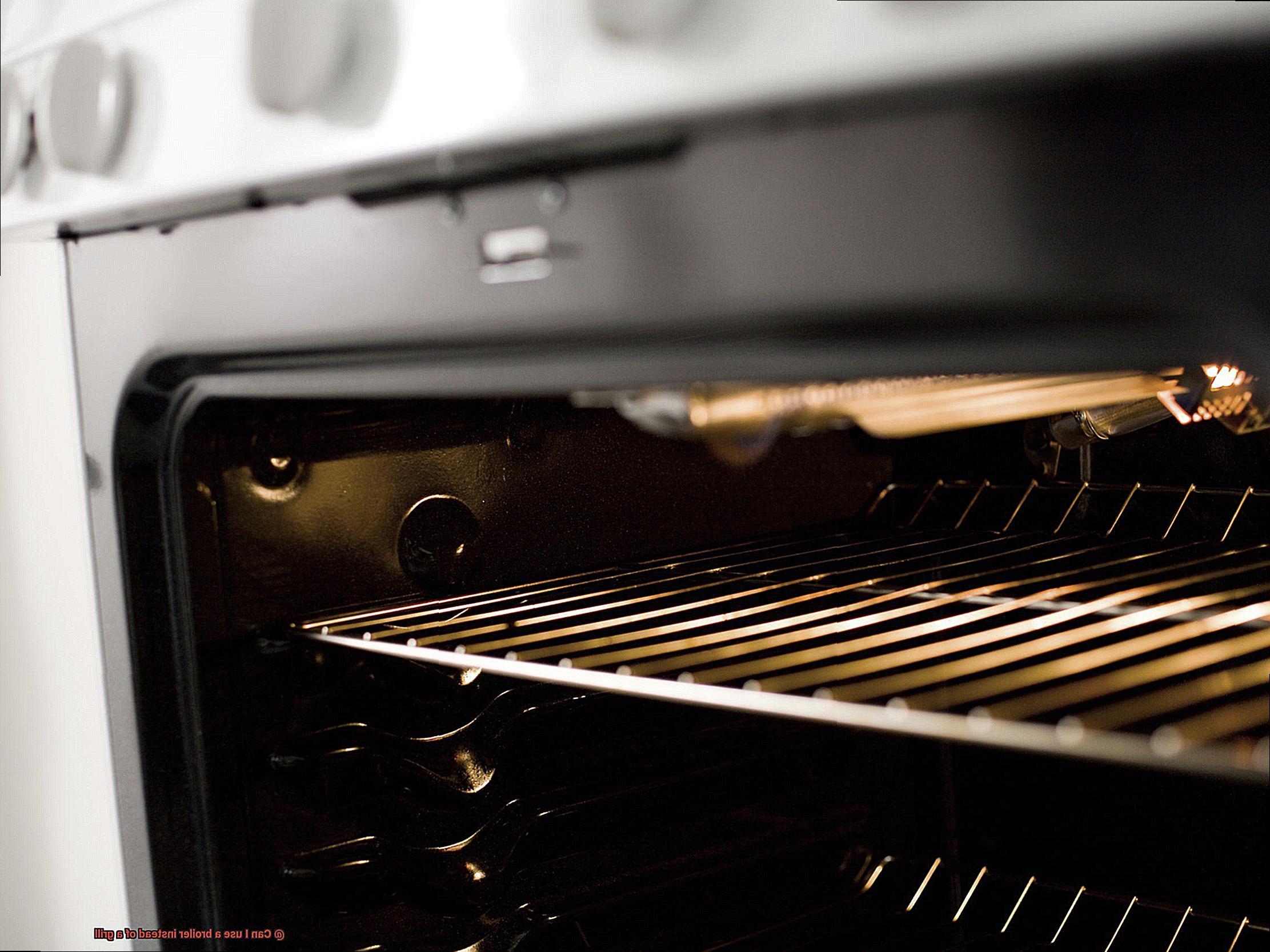
Types of Food Suitable for Broiling
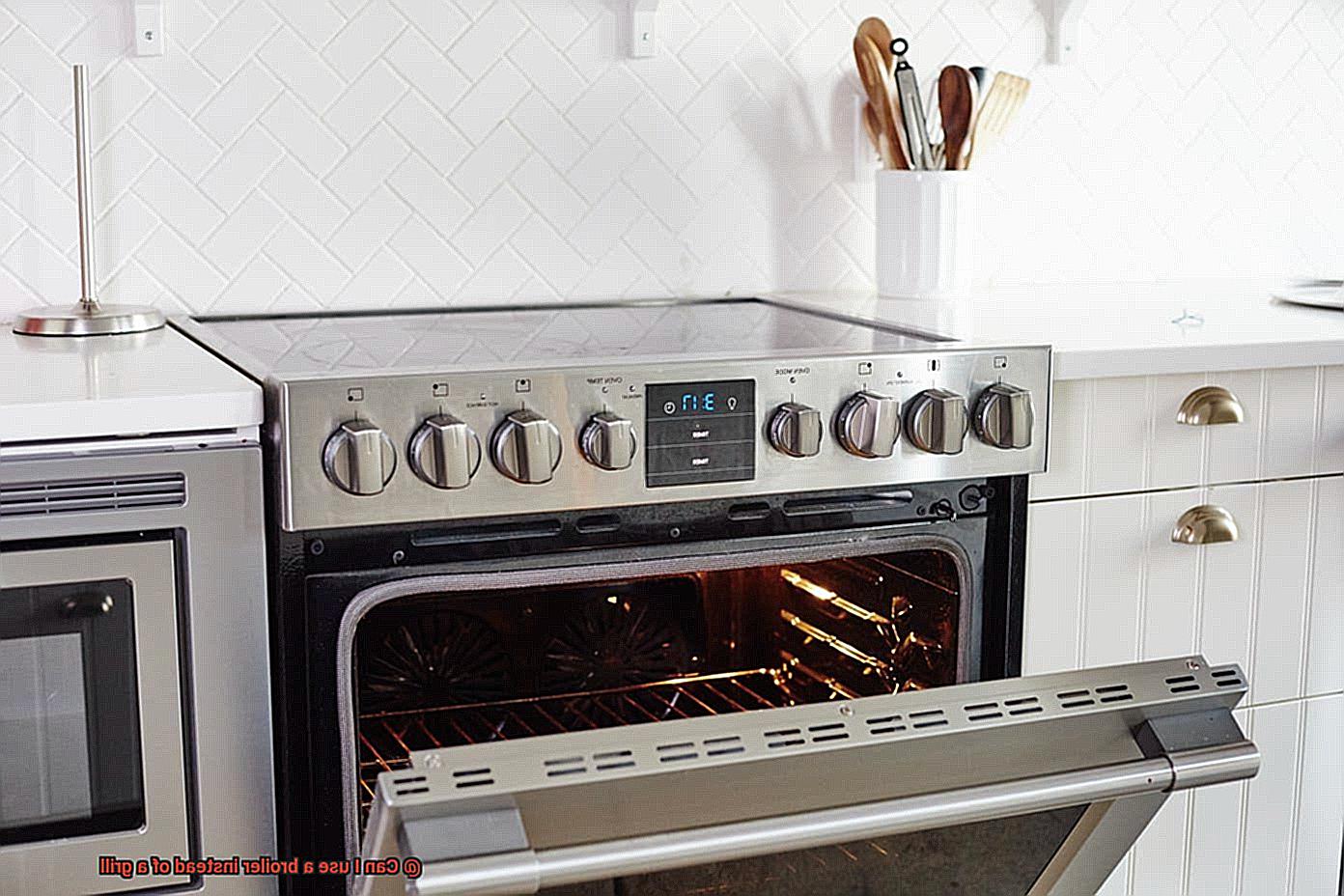
Broiling is a cooking technique that involves cooking food at high temperatures, typically from the oven’s top element. Broiling is ideal for cooking foods that require high heat and quick cooking times. Here are some delicious options to consider when looking for types of food suitable for broiling.
Meat
Thin cuts of meat like flank steak, pork chops, and chicken tenders are perfect for broiling. These meats cook quickly and develop a delicious crust on the outside while remaining juicy on the inside. It’s essential to choose cuts that are not too thick so that they can cook thoroughly and evenly.
Vegetables
Vegetables like bell peppers, zucchini, eggplant, and asparagus are great choices for broiling. These vegetables can be sliced thinly and cooked quickly under the broiler. Brushing them with a little oil before broiling helps to keep them moist and prevent them from drying out.
Fruits
Broiled fruits like peaches, pineapples, and mangoes are a delightful addition to any meal or dessert. These fruits caramelize quickly under the high heat of the broiler, creating a sweet and slightly charred flavor. You can also sprinkle them with sugar or cinnamon before broiling to enhance their flavor.
Seafood
Fish fillets like salmon, tilapia, and cod are excellent options for broiling. They can be seasoned with herbs and spices before broiling for just a few minutes until they become tender and flaky.
Bread
Broiling is also perfect for toasting bread or making garlic bread. Brushing sliced bread with olive oil or butter before broiling gives it a crispy texture and adds flavor.
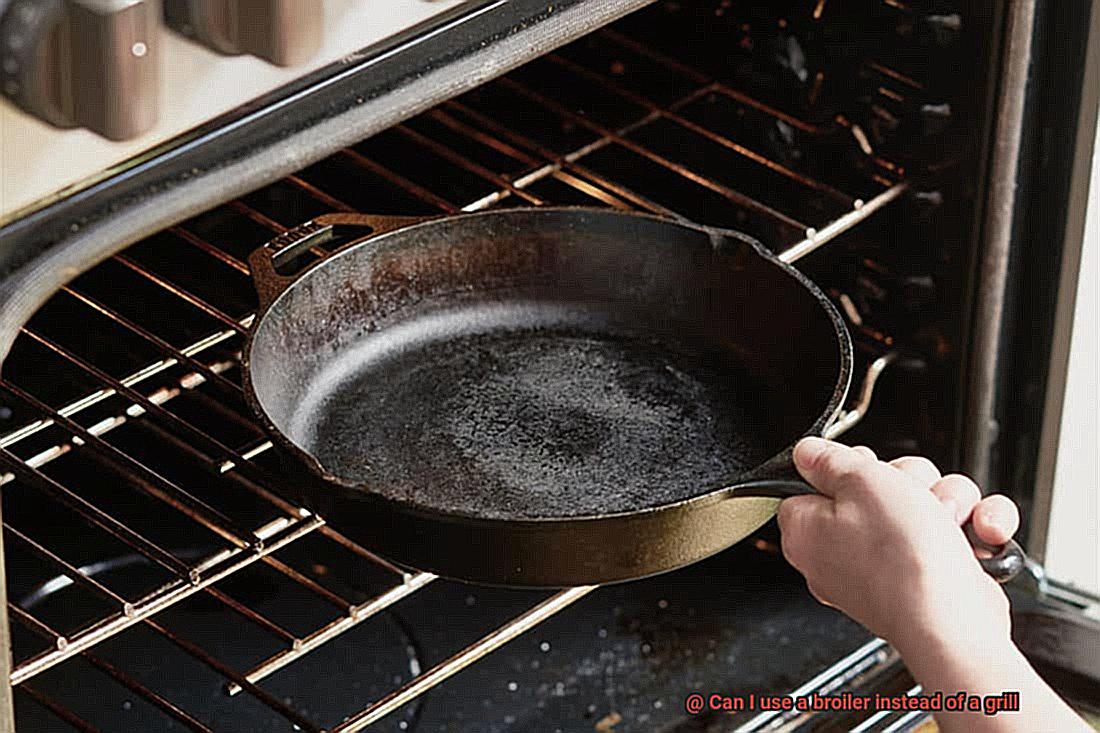
Cheese
Broiling is also an excellent technique for melting cheese on top of dishes like casseroles or nachos. Just put your dish under the broiler for a few minutes until the cheese is bubbly and golden brown.
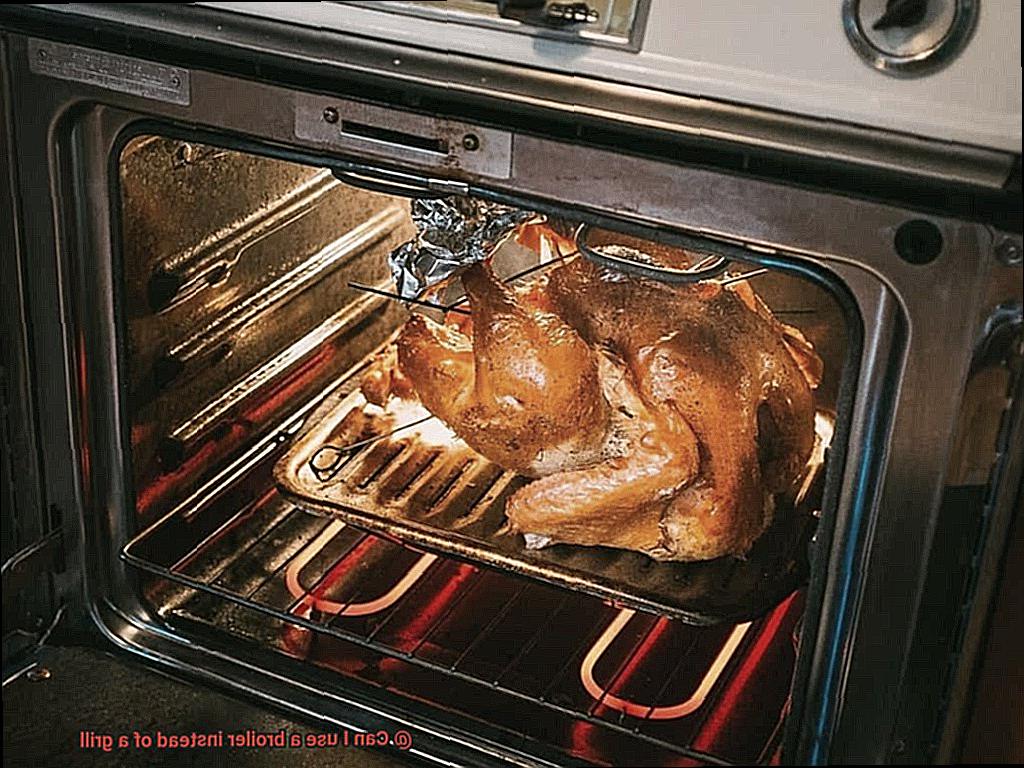
Tips for Successful Broiling
Say hello to broiling. Broiling may seem intimidating at first, but with a few tips and tricks, you can achieve mouth-watering results every time.
Tip #1: Preheat your broiler.
This is a crucial step to ensure even cooking and prevent food from sticking to the broiler pan. Set your oven to a high temperature and let it heat up for several minutes before placing your food under the broiler.
Tip #2: Use a broiler pan with slotted holes or a baking sheet lined with aluminum foil.
These options will allow excess fat and juices to drain away from the food, resulting in healthier and more flavorful dishes.
Tip #3: Adjust the rack position depending on the thickness of the food being cooked.
Thinner cuts of meat should be placed closer to the heat source, while thicker cuts should be placed farther away. This will ensure that the food cooks evenly and prevents it from burning.
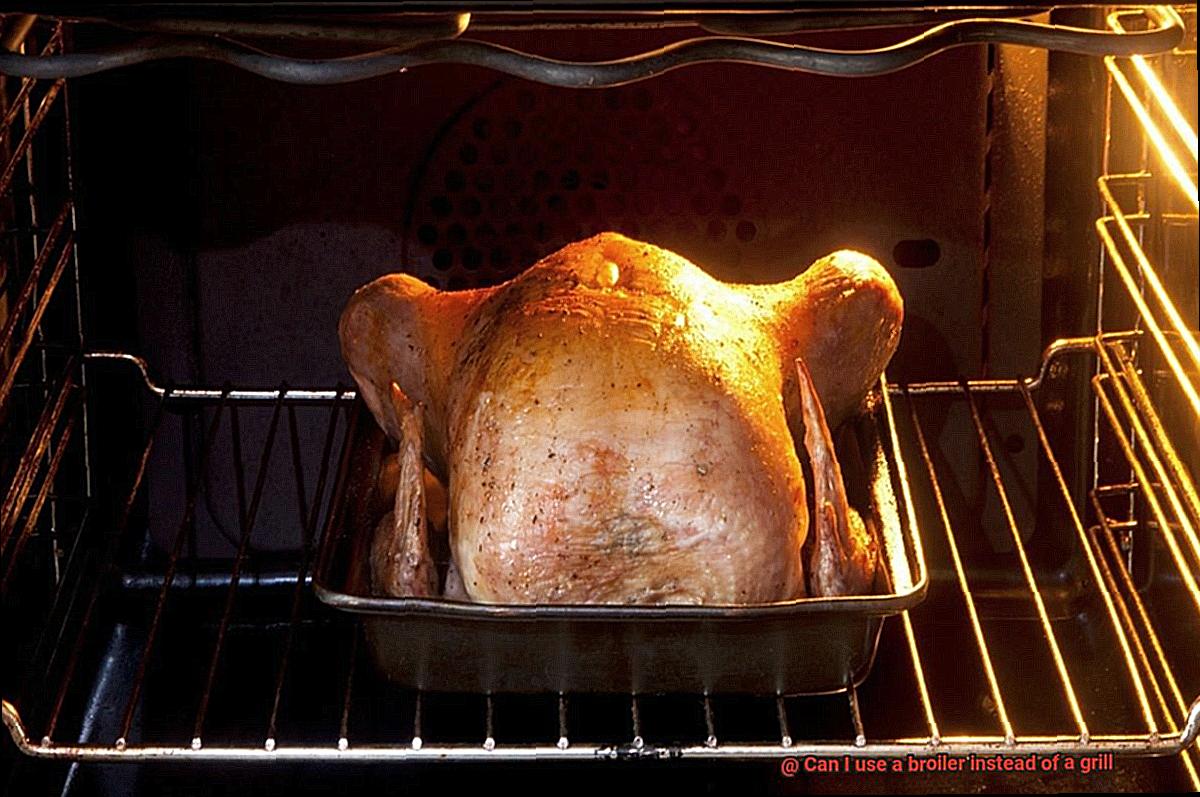
Tip #4: Keep a close eye on your food while it’s under the broiler.
Broiling can quickly go from perfectly cooked to burnt if left unattended for even a few seconds. You should also avoid overcrowding the broiler pan, as this can lead to uneven cooking. Flipping the food halfway through cooking ensures even browning and cooking.
Tip #5: Let your food rest for a few minutes after broiling.
This allows the juices to redistribute throughout the meat and prevents them from spilling out when the meat is cut, resulting in dry and tough meat. Covering the dish with foil during this time helps retain moisture.
Drawbacks of Using a Broiler Instead of a Grill
Grilling is an age-old cooking technique that brings out the smoky, charred flavor in meats and vegetables. But what if you don’t have access to an outdoor grill or the space to accommodate one? In such cases, broiling seems like a viable option. However, before you fire up your broiler, it’s important to consider its drawbacks as an alternative to grilling.
One major disadvantage of using a broiler is the difficulty in controlling temperature. Unlike a grill where you can adjust heat levels by moving the food around or adjusting gas or charcoal settings, broilers typically only have two settings – on or off. This can lead to uneven cooking and potentially overcooking or undercooking your food. Burnt and raw meat or veggies are not appetizing.
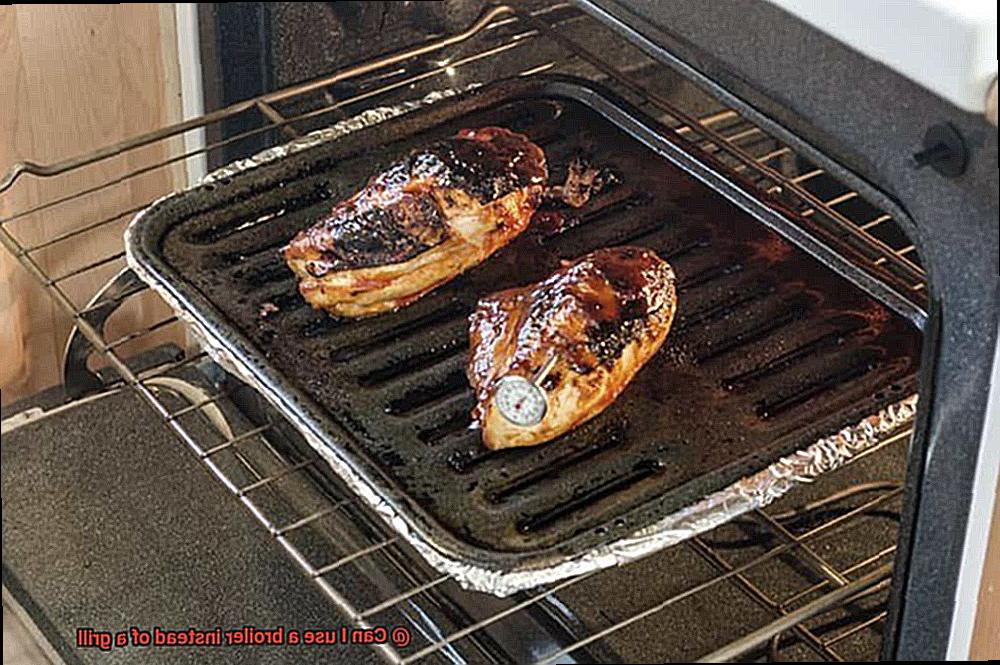
Furthermore, achieving the same crispy texture as grilling can be challenging with a broiler. Since broiling cooks from above, there’s no direct contact with the heat source which means you may not get that desired charred crust on your meat or vegetables.
Another issue with broiling is its potential messiness. The intense heat can cause fats and juices from the food to splatter and create smoke which can be difficult to clean up. This can also pose a potential fire hazard if not monitored closely.
Lastly, if you’re planning to cook for a larger group of people, broiling may not be efficient. Broilers typically have limited cooking space which may require cooking in batches, resulting in longer cooking times and potentially cold food for some guests.
3tTyzBQCK00″ >
Conclusion
In conclusion, the question “Can I use a broiler instead of a grill?” has a straightforward answer: absolutely. While grilling and broiling share some similarities as dry heat cooking methods, they have distinct differences that make broiling an excellent substitute for those who lack outdoor space or live in apartments.
Unlike grilling, which relies on direct heat from charcoal or gas flames to create that delectable char and smoky flavor, broiling utilizes radiant heat from the top of the oven to cook food quickly and create a crispy exterior. This makes it perfect for quickly cooking thin cuts of meat or vegetables that would otherwise fall apart on a grill.
One of the biggest advantages of using a broiler is its convenience. Broilers are already built into ovens, making them ideal for those who don’t have additional equipment or space to spare. Plus, they allow for more control over the cooking process, easy temperature adjustment and close monitoring of the food as it cooks.
Another benefit of using a broiler is its cost-effectiveness. Unlike grilling, you don’t need to purchase expensive charcoal or propane gas refills. With some tips and tricks, you can achieve mouth-watering results every time.
Of course, there are some drawbacks to using a broiler instead of a grill such as difficulty controlling temperature and achieving the same crispy texture as grilling. However, with practice and experimentation, you can overcome these challenges and discover new ways to elevate your cooking game.
So if you’re looking to explore new culinary horizons but lack outdoor space or access to a grill, don’t let that hold you back.

